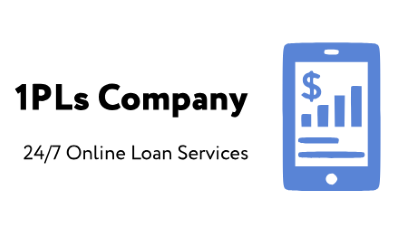Posted on 25 November 2008. Tags: bankrate.com, bounced check fees
Bankrate’s 2008 checking study found if you bounce a check, you’ll pay an average of $28.95. That’s 2.5 percent higher than last year. If you’re lucky, that’s all you’ll pay. Too often, even occasional check bouncers fall victim to banks’ practice of paying the largest check first when they’re clearing several checks received around the same time. If that first check drains your account and there are three or four smaller checks behind it, you’ll get clipped for multiple NSF fees.
Bounced-check fees by year:

Posted in Alternatives, Industry
Posted on 29 October 2008. Tags: bounced check fees
A story out of California about someone payding $650 in bounced check fees for overruning their account by $100.
Posted in Alternatives, Industry, Personal Finance
Posted on 15 August 2008. Tags: bounced check fees, Center for Responsible Lending, self help credit union
In case you didn’t know…
The Center for Responsible Lending’s Self-Helf Credit Union charges $25 per bounced check. This is for both checks and electronic withdrawls.
So, a money saving tip for CRL- if you are about to bounce a check for $100 or less, you could save yourself $10 by visiting your local payday lender and avoiding the $25 fee.
Posted in Alternatives, Center for Responsible Lending, Industry, Industry Critics
Posted on 13 May 2008. Tags: bounced check fees, Missouri, overdrafts, Ryan Cooper, Springfield News Leader
Ryan Cooper, a freelance writer, is convinced more than ever that the free market offers consumers the most choices:
The decision haunted me as I read the online bank statement. A combination of holiday spending, personal property taxes and a recent job loss caused me to overdraw my checking account.
If I didn’t come up with $200 by 7 p.m., I would bounce four checks. Each bounced check fee was about $30, for a total of $120.
In addition, my bounce protection only covers up to $350. After that amount, each check keeps bouncing until paid.
I had two options. I could cover the difference by returning every Christmas gift and pawning valuables. Or I could borrow money from a payday loan business.
I chose the payday loan option. I didn’t want to punish my children for circumstances beyond their control.
The whole column is a good read.
Posted in Customers, Industry, Media Coverage, Missouri, Positive Media Coverage, Springfield News Leader, States
Posted on 09 May 2008. Tags: bounced check fees, Center for Responsible Lending, Consumers Union, Eric Halperin, Gail Hillebrand, Nancy Trejos, Office of Thrift Supervision, overdraft fees, overdraft protection, Washington Post
Washington Post columnist Nancy Trejos is skeptical. From her column today which discusses the recent Federal Reserve proposal to crack down on “deceptive” practices:
“The OTS {Office of Thrift Supervision} and Fed proposal show that these agencies recognize that abusive overdraft loans are a significant problem,” said Eric Halperin, DC director of the Center for Responsible Lending. “However, they would continue to allow banks to enroll customers, who never signed up for it, into the most expensive credit program the bank offers.”
They also urged the agencies to consider banning overdraft fees caused by check holds resulting from a bank’s policy to delay the availability of deposited funds. “These rules should also recognize that it is an unfair practice for a bank to charge an overdraft fee or a bounced check fee for a problem caused by the bank’s decision to place a hold on the consumer’s check deposit,” said Gail Hillebrand, financial services campaign manager of Consumers Union.
The Payday Pundit has been making the point over and over again the payday lending customers are frequently trying to avoid bounced check fees and overdraft protection costs.
Posted in Alternatives, Center for Responsible Lending, Industry, Industry Critics
Posted on 30 April 2008. Tags: ATM fees, bounced check fees, credit cards, Lord of the Flies, overdrafts

What’s All This Fussing About? has an interesting (if lengthy) diatribe against increasingly pervasive and arbitrary fees from banks and credit cards. A taste:
Examing banks further; the fees we’re paying for accounts have nearly tripled in the past decade. Beyond the familiar maintenance fees and minimum balance fees, a NSF (nonsufficient funds) charge has reached $45, and bounced check fees now average $30. ATM fees can be massive, and can be incurred from your own bank AND the ATM’s host bank. Some ATM arrangements may charge you as much as a $10 fee for using an ATM more than three times a month. Fees for check “stop payment” are typically $25, and returned-deposit fees of up to $10 might accompany the many resulting bounced-check fees. We have seen the institution of fees to talk to bank tellers face-to-face. Cashier’s checks and money orders can now cost $10. Payments by phone and copies of old checks can now incur significant fees. You may also see fees with some banks for the privilege of enjoying online banking services. And while you will probably be able to select a rush payment option for Bill paying, it can come at a price from $5-$15. Paying for retail purchases with a PIN card may incur additional fees. Customers may be charged a $6 monthly fee for not having direct deposit. Wow. Be glad too, because there appears to be no cap for these fees, so maybe we should consider them low.
In addition to your significant overdraft fee (should you accidentally top your balance), you could see a cascade of these charges where you did not expect it. That’s because banks are allowed to change the order in which the checks clear. Read that sentence again, if you didn’t fully absorb it. This could cause you to bounce numerous checks as opposed to one, in certain routine situations.
Posted in Personal Finance
Posted on 25 April 2008. Tags: bounced check fees, Competitive Enterprise Institute, consumer choice, John Berlau, Lima News, Ohio
So says John Berlau of the Competitive Enterprise Institute who weighs in on the payday lending fight in Ohio in a guest editorial in the Lima, Ohio newpaper.
More from the piece:
Evidence is already mounting from other states that caps on payday loans reduce choices for consumers and leave them financially worse off than before. And, ironically, the main beneficiaries of laws pounding on payday lenders have been big banks and credit unions making millions from the overdraft fees that frequently serve the same purpose as a small loan for unexpected circumstances.
Mr. Berlau has it exactly right. Payday loan customers are frequently trying to avoid bounced check fees which if calculated as a loan would have three or four times the interest rate of a payday advance.
Posted in Alternatives, Industry, Lima News, Media Coverage, Ohio, Positive Media Coverage, States
Posted on 24 April 2008. Tags: Alternatives, APR, bounced check fees, East Carolina State University, Marc Anthony Fusaro, Mother Jones, overdraft protection, Research
…compared to bounced check fees and overdraft protection. The payday lending industry has been making this point for years, but now economists are catching up. This article on the blog of the Left-wing magazine Mother Jones discusses research by East Carolina University Professor Marc Anthony Fusaro.
From the article:
Fusaro looked at overdraft protection as a form of a short-term loan and found that people who occasionally bounce checks (between 1 and 10 times a year) pay interest rates exceeding 6,000 percent. Chronic bouncers in the study, who make up a small percentage of bank customers, paid more than $3,000 in fees annually for the privilege. The average size of the overdraft was pretty small, between $90 and $300. The most extreme case in the study was one poor soul who had a $3 overdraft outstanding for one day, which resulted in an intereste rate of 260,245 percent, a hefty surcharge for using a debt card for a latte.
While these small fees don’t translate into a ton of money for most consumers, they add up mightily for the banks, and over time, can help trap people in debt that’s hard to escape. The banks don’t make it easy, as they intentionally manipulate check-clearing to encourage people to bounce a lot of checks. (CRL says the software vendors who sell these systems to banks promise to increase revenue from overdraft fees by as much as 400 percent.)
6000% interest rates? $3000 in fees?
Posted in Alternatives, Industry, Research
Posted on 17 March 2008. Tags: Andrew Cuomo, bounced check fees, students, USA Today
This story in USA Today details deals that universities make with banks to market debit and credit cards to students. Andrew Cuomo, New York AG, is investigating these arrangements. Most interesting is the chart at the very end of the story. Because students write smaller than average checks (about $12) the per dollar cost of a bounced check fee is enormous, twice that of an adult.
Posted in Alternatives, Industry
Posted on 11 March 2008. Tags: ban, bounced check fees, National Center for Policy Analysis
The National Center for Policy Analysis has a short article on the high costs of bounced check fees and the negative impact of payday loan bans.
Read “Bad Bounce”
Posted in Alternatives, Industry, Positive Media Coverage, Research







